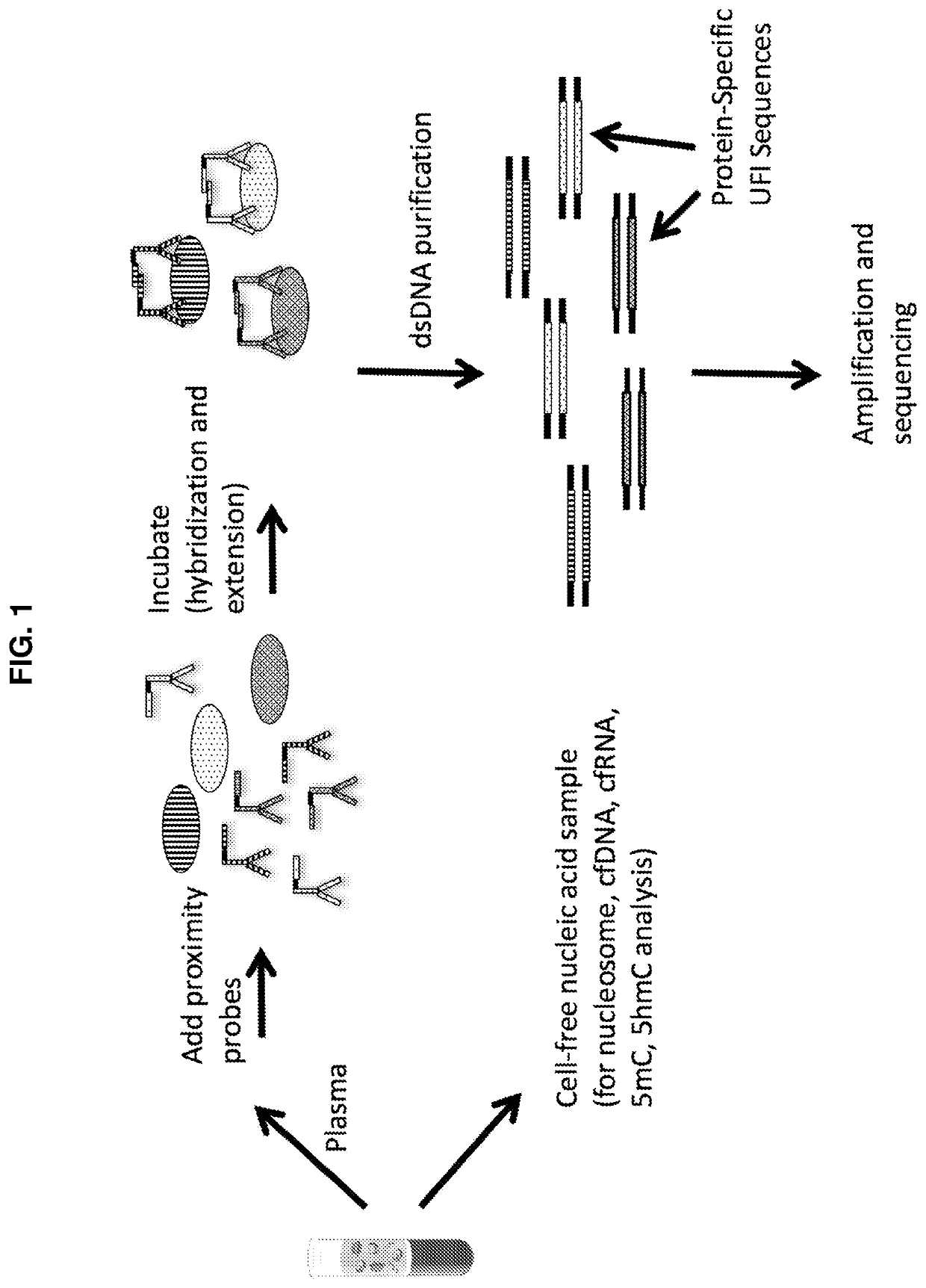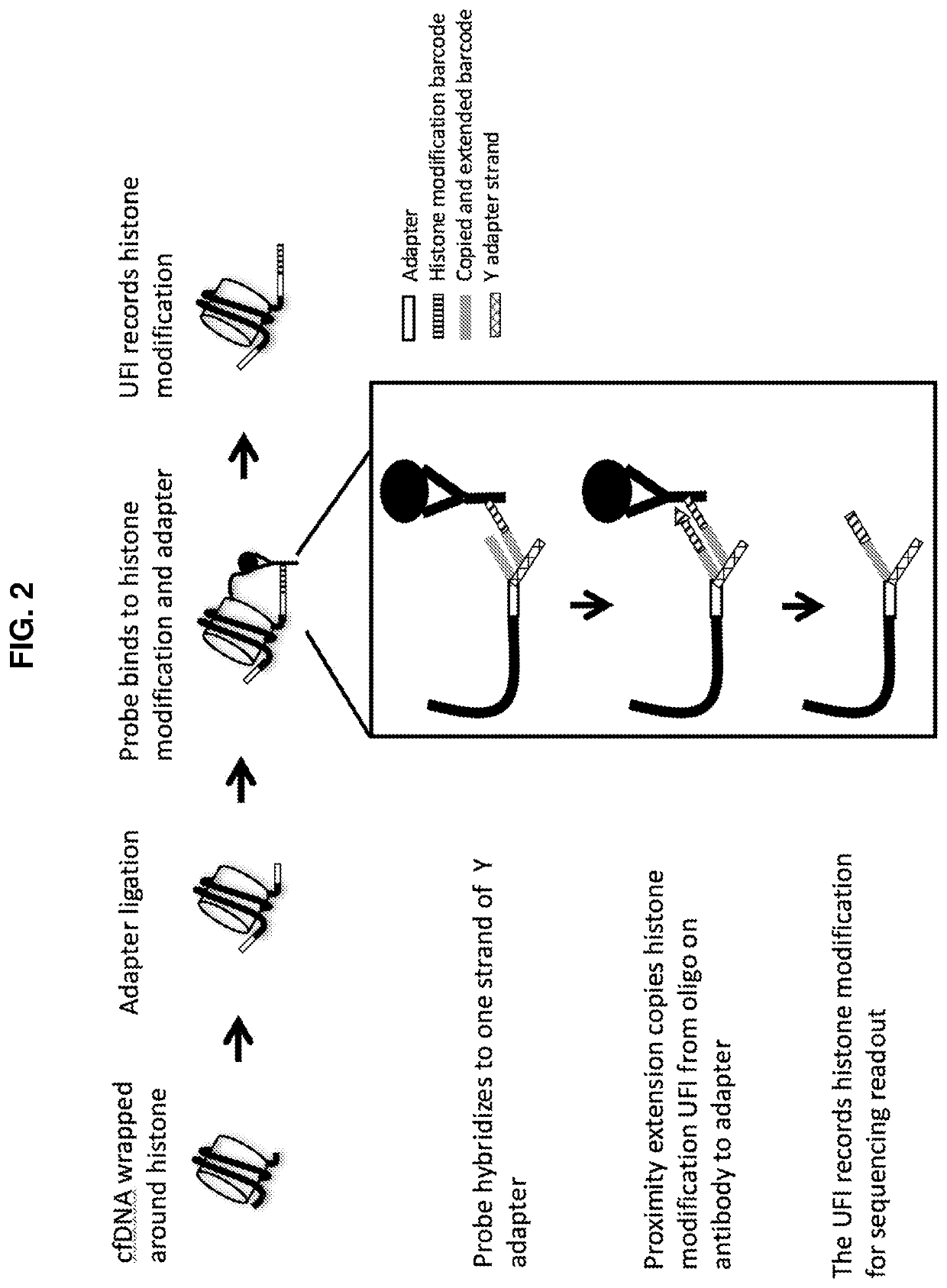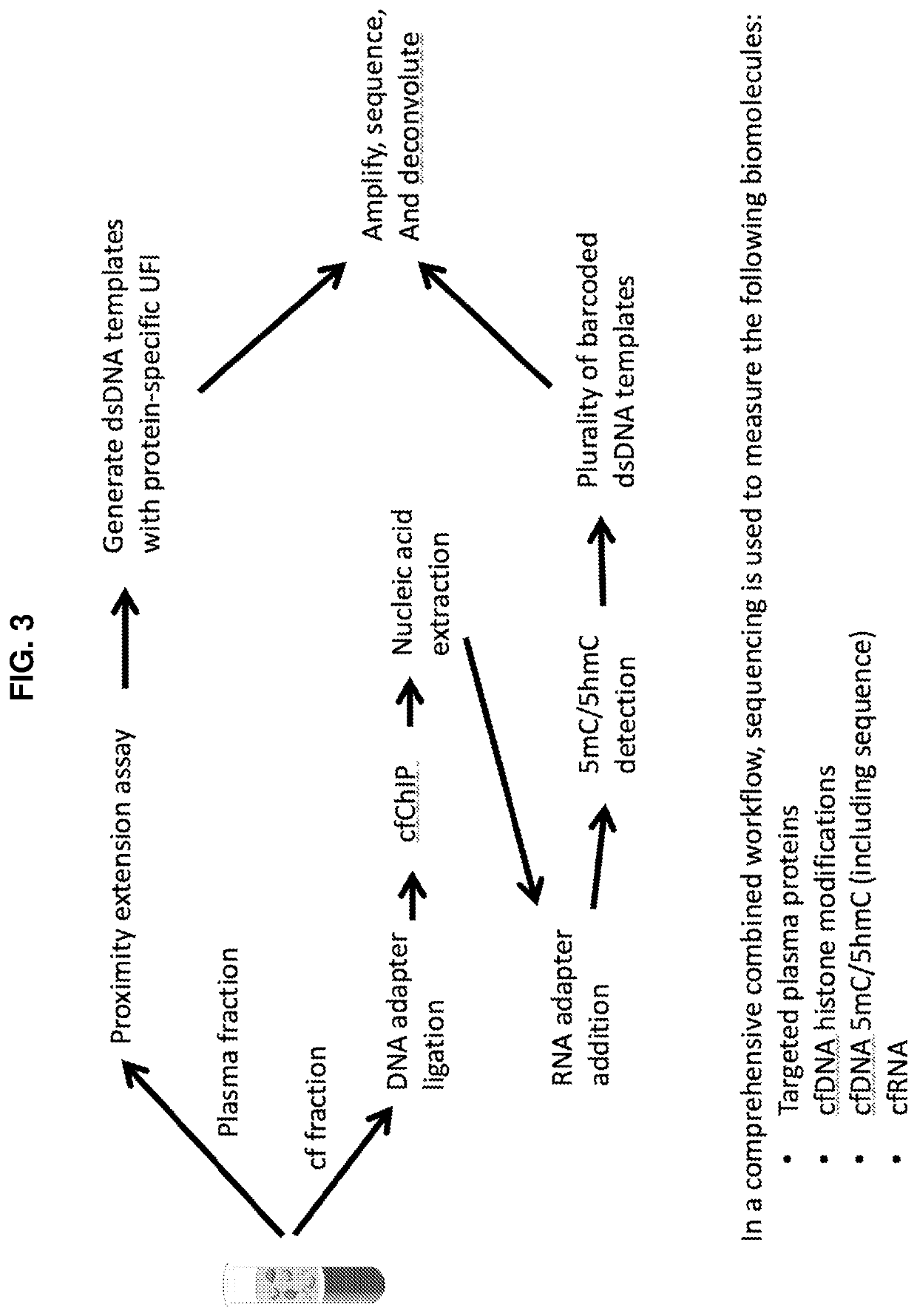Simultaneous, sequencing-based analysis of proteins, nucleosomes, and cell-free nucleic acids from a single biological sample
- Summary
- Abstract
- Description
- Claims
- Application Information
AI Technical Summary
Benefits of technology
Problems solved by technology
Method used
Image
Examples
example 1
[0244]Design of Adapter Sequences and Generation of Adapter Constructs:
[0245]The custom oligonucleotides in Table 1 (obtained from IDT, Integrated DNA Technologies, Coralville, Iowa) included three subsets: (1) truncated adapter oligonucleotides for hybridization and generation of adapter constructs; (2) indexing PCR oligonucleotides for amplification of adapter ligated products and incorporation of sample indexing; and (3) universal PCR oligonucleotides for re-amplification of libraries containing any index motif.
[0246]For initial testing, 24 unique indexes were created. Indexes were derived from a set of commercially available indexes and detected as the reverse complement of the sequence in the indexed PCR oligonucleotide primer (Index1_primer=CAAGCAGAAGACGGCATA
[0247]CGAGATGTCGGTAAGTGACTGGAGTTCAGACGTGTGCTCTTCCGATC*T . . . IndexX_primer=CAAGCAGAAGACGGCATACGAGATAGGTCACTGTGACTGGA GTTCAGACGTGTGCTCTTCCGATC*T; additional indexed primers were prepared using the same methodology).
TABLE 1...
example 2
[0253]Optimization of Library Preparation:
[0254]This example describes optimization of library preparation using the truncated adaptors prepared as described in Example 1.
[0255](a) Preparation of Template DNA for Custom Adaptor Evaluation:
[0256]Template DNA is limited in practice, so for the purposes of optimization and validation of truncated adapters, fragmented genomic DNA was believed to offer the best solution for availability of significant, homogeneous DNA template. The KAPA® HyperPlus Kit (Roche) was used for this purpose; although the HyperPlus Kit typically is used for combined fragmentation and library preparation (including adapter ligation), only the fragmentation portion was used for this example.
[0257]Stock brain and spleen genomic DNA was diluted to 500 ng per 35 μl in buffer Tris-HCl (pH 8.0) solution. Two replicate preparations of each tissue were prepared for a total of 1 μg genomic DNA per tissue type. For both brain gDNA and spleen gDNA, the concentrations and r...
example 3
[0288]Head-to-Head Comparison of Adapter Performance:
[0289](a) Library Quantitation:
[0290]Based upon initial evaluation, head-to-head evaluation of truncated versus standard (Bioo) adapters was performed. For this experiment, 20 ng fragmented brain gDNA and 20 ng spleen gDNA were each prepared in duplicate as described above; however, the remaining 80% of adapter ligated gDNA product was processed through the 5hmC enrichment protocol. As a comparison, 10 ng of each DNA type and for WGS and 5hmC enrichment was prepared using the standard protocol (Bioo adapters). All samples were sequenced on the same flowcell for comparative analysis; indexes had to be selected for Hamming distance >2 when reading through 8 bp indexing on Bioo and custom sample indexes.[0291]Size profiles of libraries produced with truncated adapters were very close to the expectation based on the size profiles of fragmented genomic DNA from brain and spleen samples;[0292]Size profiles of Bioo adapter preparations w...
PUM
| Property | Measurement | Unit |
|---|---|---|
| Electric charge | aaaaa | aaaaa |
| Temperature | aaaaa | aaaaa |
| Temperature | aaaaa | aaaaa |
Abstract
Description
Claims
Application Information
 Login to View More
Login to View More - R&D
- Intellectual Property
- Life Sciences
- Materials
- Tech Scout
- Unparalleled Data Quality
- Higher Quality Content
- 60% Fewer Hallucinations
Browse by: Latest US Patents, China's latest patents, Technical Efficacy Thesaurus, Application Domain, Technology Topic, Popular Technical Reports.
© 2025 PatSnap. All rights reserved.Legal|Privacy policy|Modern Slavery Act Transparency Statement|Sitemap|About US| Contact US: help@patsnap.com



